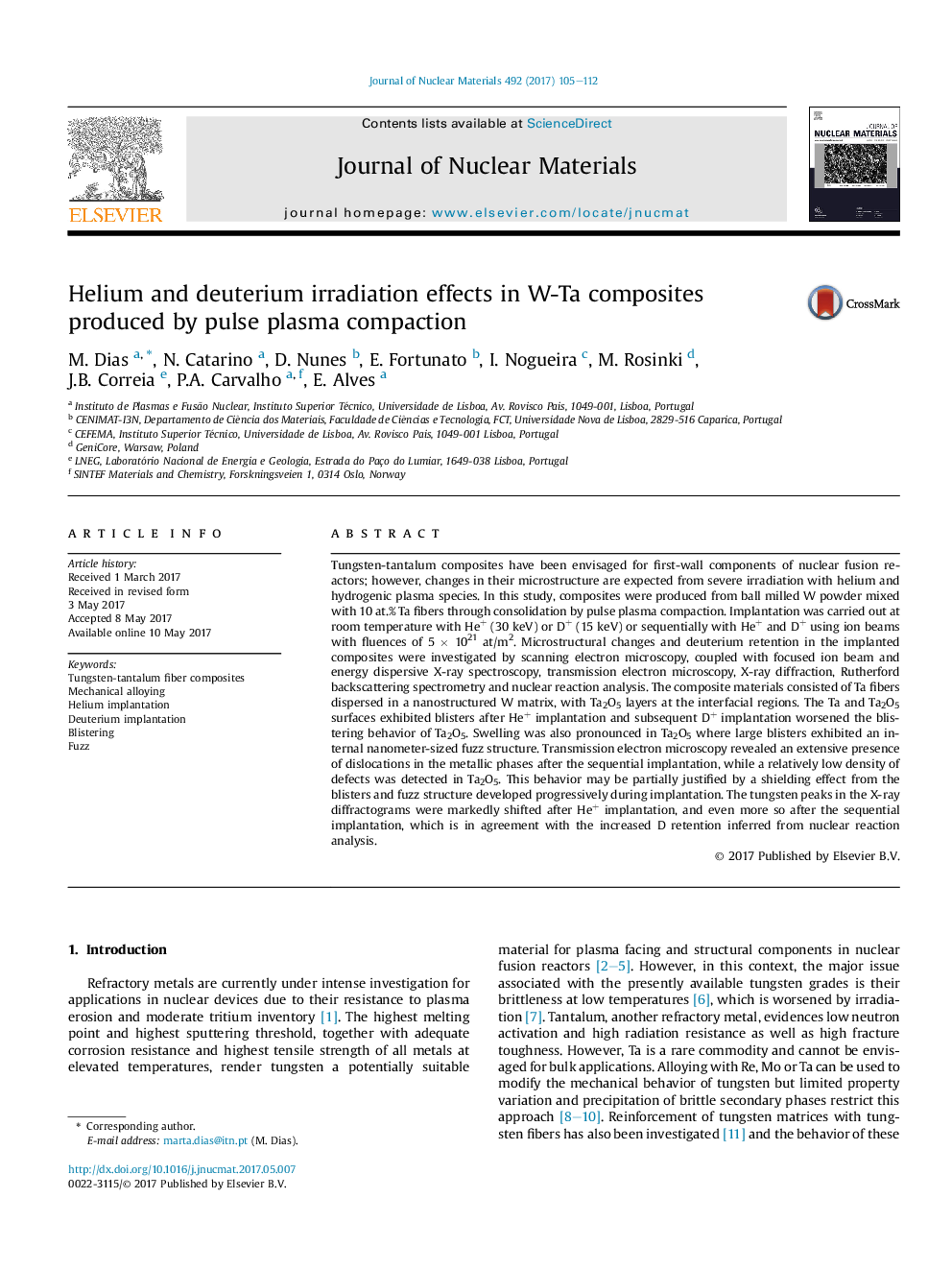| کد مقاله | کد نشریه | سال انتشار | مقاله انگلیسی | نسخه تمام متن |
|---|---|---|---|---|
| 5453897 | 1514154 | 2017 | 8 صفحه PDF | دانلود رایگان |
عنوان انگلیسی مقاله ISI
Helium and deuterium irradiation effects in W-Ta composites produced by pulse plasma compaction
دانلود مقاله + سفارش ترجمه
دانلود مقاله ISI انگلیسی
رایگان برای ایرانیان
کلمات کلیدی
موضوعات مرتبط
مهندسی و علوم پایه
مهندسی انرژی
انرژی هسته ای و مهندسی
پیش نمایش صفحه اول مقاله

چکیده انگلیسی
Tungsten-tantalum composites have been envisaged for first-wall components of nuclear fusion reactors; however, changes in their microstructure are expected from severe irradiation with helium and hydrogenic plasma species. In this study, composites were produced from ball milled W powder mixed with 10Â at.% Ta fibers through consolidation by pulse plasma compaction. Implantation was carried out at room temperature with He+ (30Â keV) or D+ (15Â keV) or sequentially with He+ and D+ using ion beams with fluences of 5Â ÃÂ 1021Â at/m2. Microstructural changes and deuterium retention in the implanted composites were investigated by scanning electron microscopy, coupled with focused ion beam and energy dispersive X-ray spectroscopy, transmission electron microscopy, X-ray diffraction, Rutherford backscattering spectrometry and nuclear reaction analysis. The composite materials consisted of Ta fibers dispersed in a nanostructured W matrix, with Ta2O5 layers at the interfacial regions. The Ta and Ta2O5 surfaces exhibited blisters after He+ implantation and subsequent D+ implantation worsened the blistering behavior of Ta2O5. Swelling was also pronounced in Ta2O5 where large blisters exhibited an internal nanometer-sized fuzz structure. Transmission electron microscopy revealed an extensive presence of dislocations in the metallic phases after the sequential implantation, while a relatively low density of defects was detected in Ta2O5. This behavior may be partially justified by a shielding effect from the blisters and fuzz structure developed progressively during implantation. The tungsten peaks in the X-ray diffractograms were markedly shifted after He+ implantation, and even more so after the sequential implantation, which is in agreement with the increased D retention inferred from nuclear reaction analysis.
ناشر
Database: Elsevier - ScienceDirect (ساینس دایرکت)
Journal: Journal of Nuclear Materials - Volume 492, 15 August 2017, Pages 105-112
Journal: Journal of Nuclear Materials - Volume 492, 15 August 2017, Pages 105-112
نویسندگان
M. Dias, N. Catarino, D. Nunes, E. Fortunato, I. Nogueira, M. Rosinki, J.B. Correia, P.A. Carvalho, E. Alves,